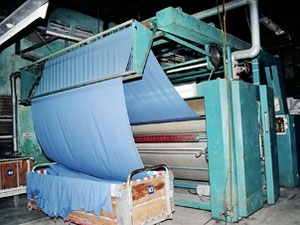Treating textile wastewater with carbonized coal
The Institute of Environmental Technology - Vietnam Institute of Science and Technology has conducted research on textile and wastewater treatment technology using carbonized coal as biological medium for very high treatment efficiency.

The technology of textile and wastewater treatment using carbonized coal was tested by the Institute of Environmental Technology to treat wastewater in Pho Noi textile and garment industrial zone, BITEXCO Nam Long Joint Stock Company, Thai Binh.
Experimental results show that, at the same conditions, the model uses carbonized coal for the treatment efficiency of COD, BOD and TOC 1.5 to 2.7 times higher than the non-coal model.
In microbial treatment environment with coal as a sticking agent, BOD treatment efficiency (taken over average value) proved to be 1.5 times more dominant (53% compared to 35%) when not available. Coal, shown by the superiority of coal in COD treatment, proved to be superior to coal treatment (nearly 2.7 times).
In particular, with high levels of pollution in the input in the vessel with coal, the COD content at the output is low and quite stable.
In terms of carbon organic treatment, the highest efficiency is shown in the TOC target of 73% in coal tanks, which is more than 2 times higher than the average of 36%. Similar to COD, the pollution content at the output of the reactor with coal is low and quite stable.
Thereby, although the wastewater of BITEXCO Nam Long Joint Stock Company and Pho Noi Textile and Industrial Zone has its own characteristics, the use of carbonized coal as a substrate in the process of microbiological treatment has been done. Significant increase in processing efficiency of pollutants such as BOD, COD and TOC.
The Institute of Environmental Technology has also applied products to treat wastewater in two textile and dyeing establishments in Vietnam, in fact the COD treatment efficiency is from 1.28 to 2.7 times, BOD 1.5 times, TOC is more than 2 times more than the control device without carbonization.
- Inauguration of a centralized wastewater treatment plant
- Use leaves for scrub to clean medical waste
- 4,300 Vietnamese died prematurely due to coal gas in 2011
- How is coal formed?
- Unique 'technology' hospital wastewater treatment with reeds
- Olive seeds that have carbonized can be used in construction
- Indonesia will be the first country to liquefy coal gas
- Unique sculpture on coal in Quang Ninh
- No need to weave, sweaters are about to be printed with 3D technology
- Breathtaking view of a coal mine burning for 3 weeks
- Asia with a hungry stomach and polluted cities
- Coal, the biggest environmental devastator
 'Barefoot engineer' invents a pipeless pump
'Barefoot engineer' invents a pipeless pump Process of handling dead pigs due to disease
Process of handling dead pigs due to disease Radiometer
Radiometer Warp Engine: Technology brings us closer to the speed of light
Warp Engine: Technology brings us closer to the speed of light